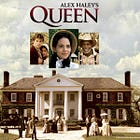The cultural impact of Miss Black America
Happy Easter, Brunchers! Or as we would say in church “Happy Resurrection Sunday! He has risen!” Let’s just get into it! When Black women were told they didn't fit America's definition of beauty, they didn't just complain – they built their own stage, hung their own spotlight, and showed the world exactly what it was missing.
The story of Miss Black America is one of those perfect examples of how sometimes the best response to exclusion is creation rather than just criticism. And honey, did they create something special.
Picture this: It's the 1960s, and for decades, the Miss America pageant had made it crystal clear that Black women need not apply. They literally had something called "Rule 7" stating contestants must be "of the white race." Though they eventually dropped the explicit rule in the 1950s, the message remained the same – Black women weren't welcome on that stage.
Now, any southerner knows there's nothing quite like being told you can't do something to make you determined to prove somebody wrong.
J. Morris Anderson, a businessman and activist in Philadelphia, had a daughter who asked him a simple question that many parents might recognize: "Daddy, why aren't there any Black women in the Miss America pageant?" Rather than just explaining the ugly truth of discrimination, Anderson decided to do something about it.
In 1968, while Miss America crowned yet another white queen in Atlantic City, Anderson staged the very first Miss Black America pageant just a few blocks away. Talk about making a statement with perfect timing!
The first Miss Black America, Saundra Williams from Philadelphia, accepted her crown while rocking a natural afro – y'all, this was revolutionary at a time when straightened hair was considered the only "professional" look for Black women. She didn't just win a beauty contest; she made a declaration: "Miss America does not represent us because there has never been a black girl in the pageant. With my title, I can show black women that they too are beautiful."
This wasn't just about beauty in the conventional sense. From day one, Miss Black America celebrated intelligence, talent, and cultural pride alongside physical appearance. The pageant became a place where Black women could be fully themselves – no code-switching required, no need to downplay their Blackness to make others comfortable.
Some of the women who graced the Miss Black America stage went on to become household names. Did y'all know Oprah Winfrey herself competed in 1971 representing Tennessee? That's right – before she became the media queen we all know, she was working her pageant wave.
Suzette Charles won the crown in 1977 before later becoming Miss America 1984 (when Vanessa Williams resigned). Television personality Renee Tenison and actress Cynthia Bailey also held the title.
But it wasn't just about who won. The pageant created opportunities for countless Black designers, makeup artists, choreographers, musicians, and entrepreneurs who found a platform within this ecosystem. When mainstream doors remained closed, Miss Black America built its own house and invited the community in.
The talent portions of Miss Black America often showcased performances you'd never see in mainstream pageants – spoken word poetry addressing social issues, dance routines incorporating African movements, gospel performances that would take you straight to church. This wasn't just entertainment; it was cultural preservation and celebration.
The swimsuit competitions weren't just about who had the "ideal" figure but celebrated the diversity of Black women's bodies when mainstream beauty standards certainly didn't. The evening gown segments often featured designs by Black designers who rarely got mainstream recognition.
And those interview questions? They went deep, addressing community concerns, social issues, and the lived experiences of Black women in America. These weren't just potential beauty queens; they were potential leaders.
Like any long-running institution, Miss Black America has had its ups and downs over the decades. It reached peak popularity in the 1970s and early 80s with television coverage and major sponsors. Don Cornelius of Soul Train fame helped bring it to TV screens across America.
There have been years when financial challenges meant no competition was held, but like any good southern story, there's always been a comeback. The pageant has continually reinvented itself while staying true to its core mission.
In recent years, as mainstream pageants have become somewhat more inclusive, some have questioned whether separate competitions like Miss Black America are still necessary. But the pageant's supporters maintain that having your own house will always be different from being a guest in someone else's.
The cultural impact of Miss Black America extends far beyond crowns and sashes. By creating a visible, national platform celebrating Black beauty during the height of the civil rights movement, it contributed to the whole "Black is Beautiful" movement that helped generations of Black women embrace their natural features.
What was revolutionary in 1968 – declaring that Black women's beauty, talent, and intelligence deserved recognition – helped pave the way for greater representation across American culture. Sometimes you have to create the change you want to see.
Today's Miss Black America continues this tradition, focusing on education, community service, and professional development alongside beauty. It stands as both a historical milestone and an evolving institution, reminding us that sometimes the most powerful response to exclusion is not just demanding a seat at the table, but building your own table and inviting everyone to feast.
So next time y'all see a beauty pageant, remember this: Miss Black America wasn't just about who was the prettiest in the room. It was about Black women saying, "We define our beauty, we create our platforms, and we shine in our own spotlight." And honey, that's a legacy worth celebrating.










